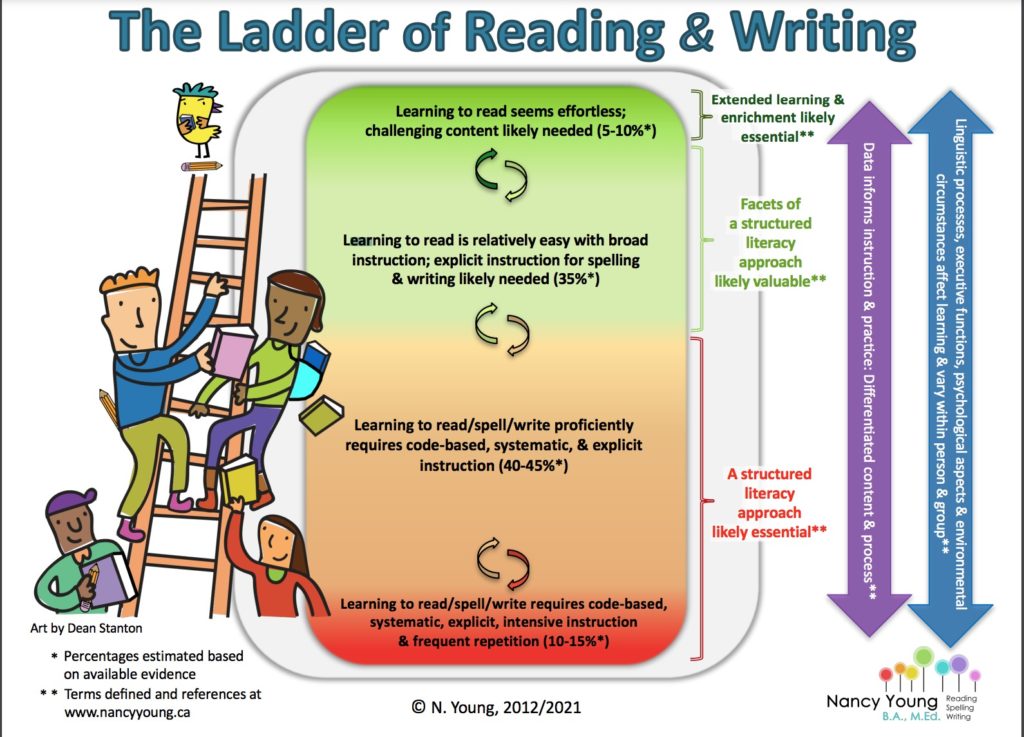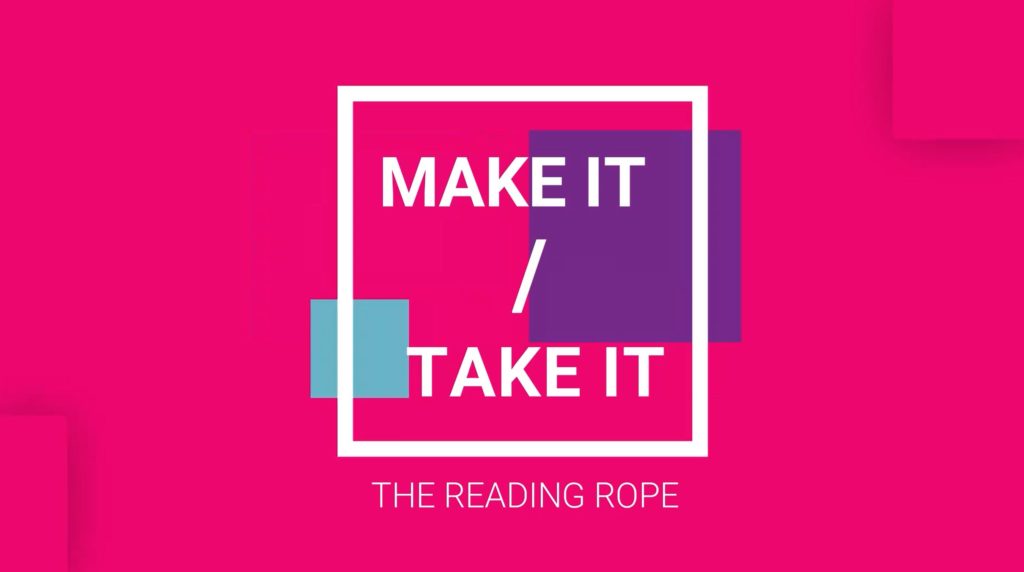
Answers To Your Burning Questions
What should I do if my child is struggling to learn to read, write, and/or spell?
- Right off the bat, let me offer 4 bits of advice:
- Avoid panicking!
- Trust your ‘gut’.
- Knowledge is power–get started by taking in information on ‘My Favorite Resources’ (in the top menu bar).
- In my experience, figuring out a plan is a process which takes time–get started sooner rather than later.
- If the child in question is not your first child, you may have experience to go with based upon how your older child progressed through the preschool and primary elementary school years. If the child in question is learning differently and/or more slowly than your older child, all the more reason to act early.
- If the child in question is your first child, you may have less experience to work with, but it is still important to trust your intuition. If you sense that something is not going smoothly, it will not hurt to act early.
- The best things a parent can do in this situation are:
- Consult the Favorite Resources on this website and take in information in whatever way best suits you (reading, listening, watching, etc.). The more you know, the more you will be able to help your child. The more you know, the better off you will be when you consult your child’s teachers.
- Consult to your child’s pediatrician, who has likely been routinely observation and asking you questions about your child’s vision, hearing, motor, general cognitive, and language skills.
- Speak with your child’s teacher(s) about their impressions of your child. Remember, you are all members of your child’s “team”, you are not opponents! Ask questions about the approach used for reading/spelling instruction, as well as any copies of written samples or assessments. It may be difficult to remember everything, so consider taking notes or going with a trusted family member or friend. In some circumstances, recording the conversation, with the teachers permission, maybe helpful so that you can listen again when you are not in the ‘heat of the moment. It is perfectly acceptable to ask for information in writing as well.
- Keep written samples of your child’s work and/or record your child’s attempts at reading aloud and speaking to share with school personnel. Bring them with you when you meet with your child’s teacher(s).
- If you feel that your child may require special education services, put your request in writing to the administrator of your child’s school. Educational testing is typically required to determine the need for and scope of special education services. Federal regulations require the school to act within 60 days of receiving your request and your signing permission to test your child. Keep track of the date and ask to sign a form allowing permission to begin testing. Some states have shortened the time frame to either 30 or 45 days.
- After testing is complete, you will be asked to attend a meeting to review and explain the results. If your child is eligible to receive special education services, an IEP (Individual Education Plan) will be developed. If an IEP is recommended, ask if the personnel working with your child have training in Structured Literacy. If you have a question, contact me. Sometimes, solutions other than an IEP will be recommended.
- Some families, if they are able, will choose to employ a private tutor to work with their child. I prefer to consider this in the same way parents sometimes choose to have private music or art lessons or private batting clinics as an ‘add-on’ to what is offered in school music or gym classes. Many children attend academic tutoring; do not consider it a weakness. Be sure the tutor you employ is trained in Structured Literacy. The International Dyslexia Association maintains a list of Service Providers. Contact me if you have additional questions. I am glad to provide you with the best ways to locate an appropriate tutor for your child. Finding a skilled tutor you trust will give you peace of mind, watch as your child progresses, and increase your child’s confidence.
- Consult the Favorite Resources on this website and take in information in whatever way best suits you (reading, listening, watching, etc.). The more you know, the more you will be able to help your child. The more you know, the better off you will be when you consult your child’s teachers.
How does my child’s social and emotional wellbeing influence language and literacy development?
As you may have suspected or already know, a child’s stress level and ability to socialize appropriately is related to how much he/she is able to learn. If a child is suffering social and/or emotional stress, it will be difficult for the child to regulate his/her behavior, focus upon, and retain what is presented and to be learned.
Some children who appear mildly stressed, anxious, or depressed have difficulty paying attention to what is being taught.
Sometimes, the stress and anxiety are so severe that children may fully ‘shut down.’
Many children are suffering from a lack of socialization due to remote/hybrid schooling. This may also negatively affect the child’s ability to focus, self-regulate, and retain what is presented and to be learned.
Some children may be suffering from a lack of adequate sleep and exercise, which in turn, negatively affect a child’s social-emotional wellbeing. “A healthy body stimulates a healthy mind” is a well known phrase. That said, physical activity aids students’ abilities to focus, multitask, and utilize working memory skills. Mind-body activities such as yoga or tai kwon do may be beneficial. According to Stanislaus Dehaene, sleep allows our brains to review, process, and consolidate what has been learned throughout the day. So…having enough sleep is also necessary for optimal learning.
Finally, cognitive neuroscientist Adele Diamond writes “more learning occurs in a joyful classroom [or home environment–my add] where children feel safe, secure and accepted, where they feel the teacher [or parent/caregiver-my add] sees them for who they are and genuinely cares.” An emotionally safe environment reduces stress, and allows children the freedom to make and learn from their mistakes, which is what true learning is all about.
Isn’t this what we want for our children?
Why do families need more support in the current times?
Supporting our children’s journey through school has become harder for several reasons:
- Most children’s adult family members work outside the home in addition to caring for children (many are ‘essential workers’).
- Many families do not have extended family members nearby or available to help with raising children.
- Language barriers may exist since some families do not speak English at home and/or parents themselves have literacy issues.
- Since educators know more about how our brains learn to read and write, formal instructions begins earlier than in the 20th century.
- Extracurricular activities or after school daycare often keeping families ‘on the go’ until dark, leaving homework completion by tired children until the very end of the day.
- Due to remote and hybrid instruction, parents tell me over and over again how they need to sit with their children to work with them on assignment re-explanation and completion.
- For better and worse, technology plays a large role in our children’s development and education . Important questions are: Is there adequate learning space for each student to participate in remote learning? Does the family have suitable internet access? Do students have use of computers/tablets to ensure enough time for learning?
Why do I have difficulty helping my child with his/her school work on a regular basis?
The answers to this are quite variable depending on the family, the child, and school situation. Some answers include:
- Language barriers may exist between school and home due to the primary language used at home. This may be non-English language use, but also the special terms or ‘jargon’ often used in the classroom.
- Children may often feel stressed and tired after a long school day. Parents may also feel stressed and tired after a long work day or during the day juggling their own remote work day with their children’s remote school day, not to mention many other personal and family responsibilities.
- Parents may not have a clear understanding of the materials needed for the child to complete lessons. Whether engaged in face to face, hybrid, or remote learning, the child may not bring home or have the correct materials (planner, books, papers, etc.) or have the ability to a bring home a textbook. This results in the parent having little to work with.
- The child may have difficulty with age appropriate organizational skills. This makes a parent’s role even more harder. Depending upon the age of the students, this may include difficulty planning and completing short/long term assignments, organizing notebooks, papers, or materials even if they are brought home.
- Parents may have learned to read or master other school subjects using different/older methods of instruction than may be currently used with their child.
- Often, students who have special needs may require even more consistent parental support, which may place additional stress on the family.
- Finally, due to pandemic restrictions, teacher and fellow student role models are not present in the same ways they have been in the past. As a result, some students may have difficulty with reduced socialization with fewer opportunities to work cooperatively, as well as difficulty with the need to work and stay organized more independently.
How has a teacher’s work life changed in the past few decades?
- Many teachers feel more intense pressure for their students to achieve academically in a way that is different from the past. This may be due to annual testing.
- Many teachers receive a constant stream of emails rather than personal contact from administrators, colleagues, and parents.
- It is far easier to send an email than to write a note…this may account for some of the increased correspondence.
- Many teachers must be masters of technology in addition to masters of the subjects they were trained to teach.
- Teachers are perceived by many as having ‘the summers off’. This is increasingly untrue as teachers spend a good deal of time attending Professional Development, teaching summer school, researching curricula, attending classes for their certification(s), etc.
- Like many, teachers often go through their days feeling rushed.
- Many teachers feel pressure due to increased security measures including lockdowns.
- More students who experience depression and anxiety may be in attendance. These behaviors are sometimes due to Adverse Childhood Experiences (ACEs), and complicate the teacher’s role.
How has ‘school’ changed in the past few decades?
- Oftentimes, more content is expected to be taught in the same number of hours.
- Just like parents and teachers, students often feel ‘rushed’.
- Schools have become a location for meal provision (breakfast and lunch; sometimes food is provided for weekends), and many schools are often functioning as ‘community centers’.
- Students spend more time interacting with digital media than dealing with the sensory experience of paper text and creating written language by hand.
- Students spend less time actually reading books in favor of listening to them.
- Fewer parents are available to volunteer in and out of the classrooms.
- Better services for students with special needs exist (only since 1979), and with that, the need for far more assessments, paperwork, personnel, and individual students must leave whole class instruction to attend pull-outs for services such as speech/occupational therapy, small group instruction, etc. exist.
- Increases in overall state and national testing exist, as well as an increase in instructional time ‘getting ready’ for testing.
- Increased security measures exist, which may be frightening and stressful to students.
How has our environment changed in ways making academic achievement more difficult?
- Many children have increased their involvement and time commitment to extracurricular activities. Homework and studying are pushed to the very end of the day or attempted in transit.
- Family dinner time, where school topics and happenings are discussed is less common.
- Excessive screen time has caused stress and disciplinary issues for many families.
- Due to a variety of changes in society, less formal attention is sometimes paid to the maintenance of school-social life-family life balance.
Is using digital technology “all bad”?
Simple answer to this: “No!!” We live in a hybrid world where all of us need to be both text/paper and pencil literate, as well as computer/screen literate for both reading and composing written language.
What is the Covid-Slide and the Covid-Slowdown?
It is hard to precisely predict how much learning will be lost due to the pandemic’s effect.
Due to school closures and increases in remote/hybrid learning and access to remote learning, many students will likely experience the effects of a Covid-Slowdown. A slowdown occurs when a students’ knowledge and skill levels remain stable, and are maintained at the same level as when they last attended face to face instruction. A Covid-Slide is described as a situation where students show patterns of academic setbacks, which could be considered more severe than simply losses experienced during a typical Summer Slide. Those students receiving special education services, those students considered ‘at risk’, or those already considered ‘behind’ would likely suffer more severe academic losses.
Why do some children learn to read and write so easily, while others need more practice and time, and still others struggle to master literacy?
View the graphic at the bottom of this page.
My colleague, Nancy Young, created a graphic illustrating the answer so well. As you can see, about 40% of the student population will learn to read with pretty much any method of instruction (green area below). The middle group of 40-50% of children will achieve literacy when provided with instruction based on the Science of Reading (direct instruction/practice with phonological awareness, sound/symbol relationships, decoding/spelling, fluency, vocabulary, comprehension, morphology [word parts]). This is the orange group below. Importantly, the students in the red group, comprising 5-10% of students, must have this type of instruction, but most often, require more intensive instruction involving more repetitions and even more practice.


SUBSCRIBE TO MY BLOG TO RECEIVE AN EXCLUSIVE VIDEO
Lori takes you through a Make It, Take It video featuring Scarborough’s Reading Rope.
PLUS, you’ll receive helpful tips, advice, and more delivered right to your inbox. How easy is that?